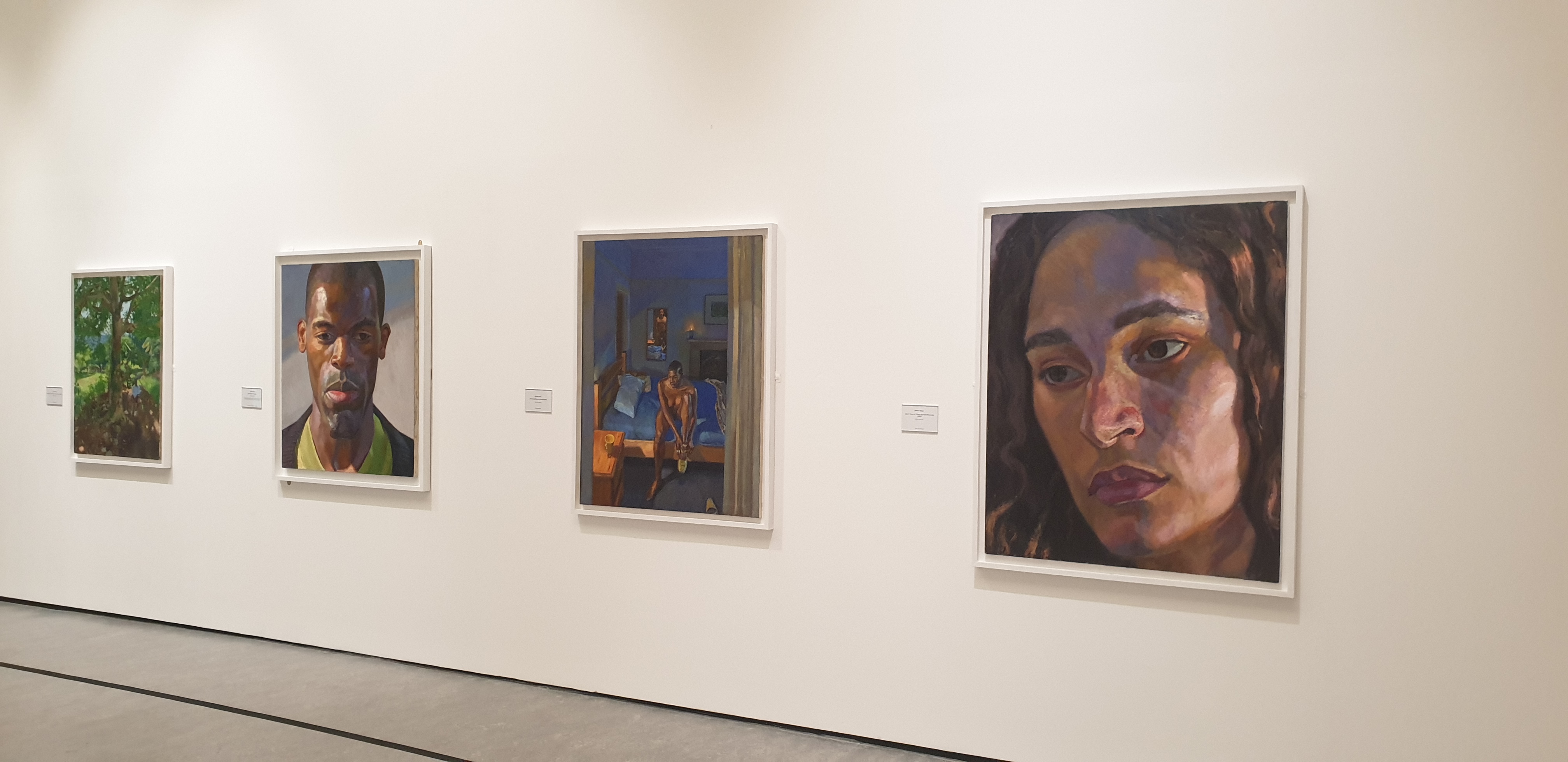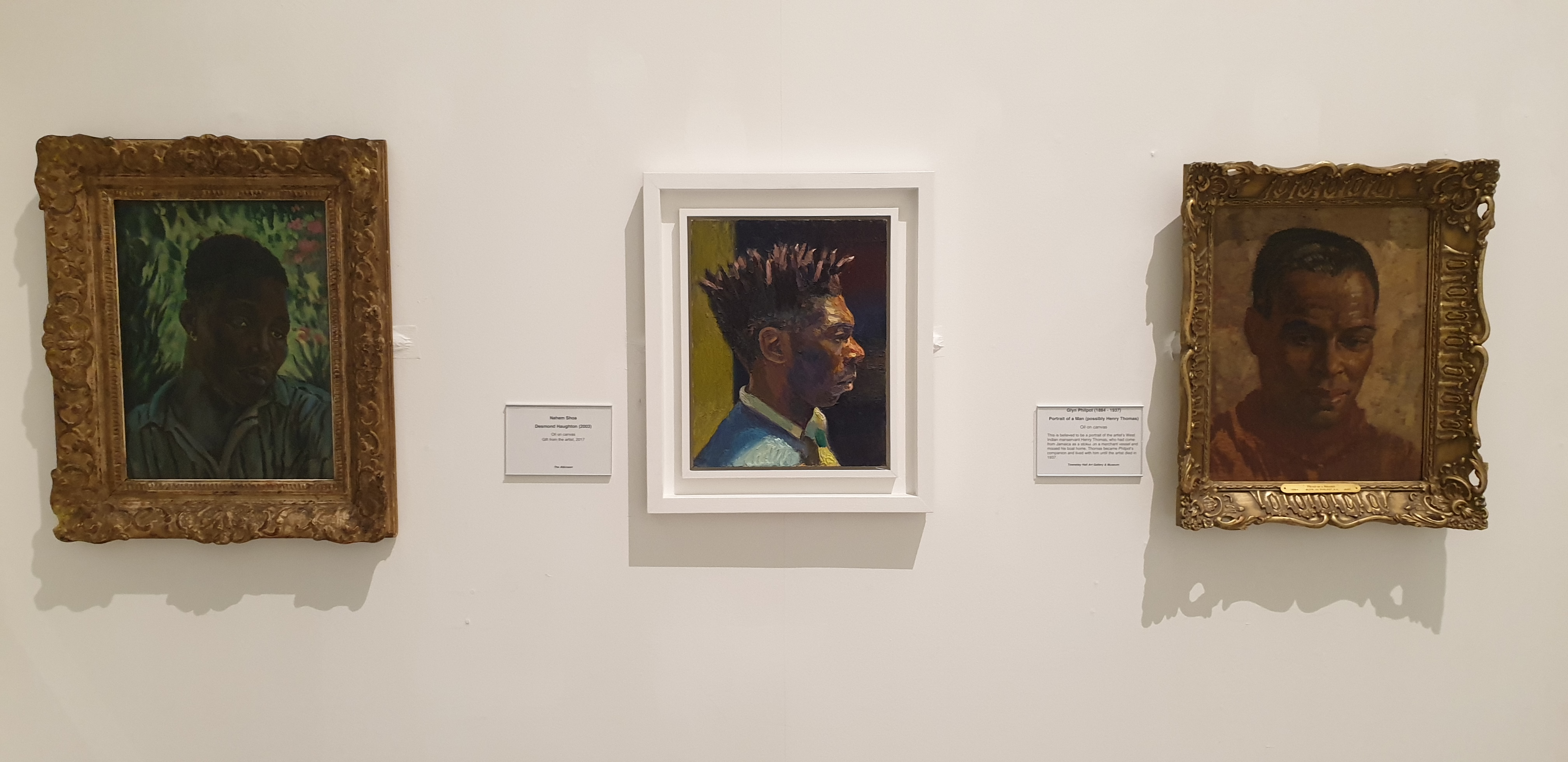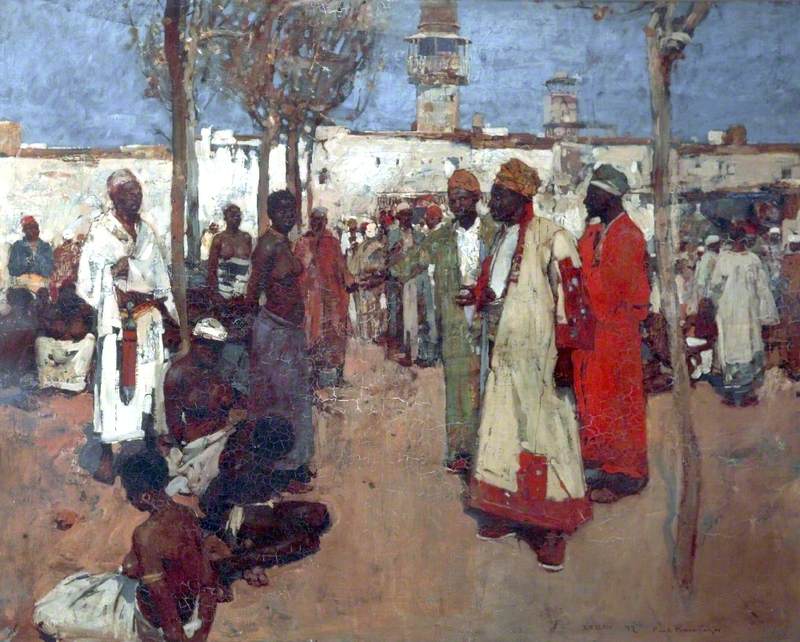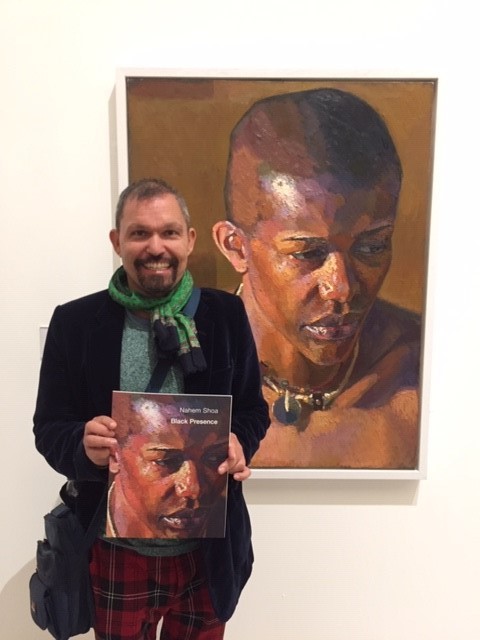Most British museums and art galleries have very few paintings of black people and even fewer by black artists. The recent donation of Nahem Shoa’s portraits of black and mixed-race sitters to UK art galleries is a small but nonetheless significant step in addressing the issue of multiculturalism in our public art collections.

As a curator, I have been involved in building collections of fine art in galleries across the north-west of England since the early 1990s. During that time, I have also curated exhibitions that have examined the historic development of art collections in northern provincial galleries in towns like Preston, Bolton, Oldham, Rochdale and Southport. Nahem’s recent gift of a portrait of a black sitter to The Atkinson and its contextualization in the ‘Black Presence’ exhibition created an opportunity to review the extent to which our museum collections could be said to reflect our culturally diverse society. In the ‘Black Presence’ exhibition Nahem’s portrait of ‘Desmond Haughton’, his friend and fellow artist, is presented next to other images of black people borrowed from regional and national public institutions. Some of those paintings are from The Atkinson’s collection and the contrast with Nahem’s work is immediately obvious. Historic images of black and multiracial people tend to be negative and based on a limited number of stereotypes. The Atkinson’s paintings are no exception.

The best-known depiction of black people in The Atkinson’s collection is probably Frank Brangwyn’s ‘The Slave Market’ of 1893 (ill.1). Brangwyn’s painting attracted attention from contemporary critics, not for its subject-matter but for its vivid colouring which it was said, ‘…launched a violent assault on the eye’. The subject itself was not considered to be at all unusual, belonging to a Western tradition of Orientalist paintings that was both prurient and exoticizing. Such stereotypical views of black people were still being acquired by public galleries well into the twentieth century.

In ‘Black Presence’ Nahem Shoa’s portraits are exhibited alongside two portraits from The Atkinson’s collection from the first half of the twentieth century, Theobald Butler Gould’s ‘The Half-Caste’ and Neville Lewis’s ‘The Gardener’. Significantly both portrait sitters are unnamed. ‘The Half-Caste’, a portrait of a young man smoking a cigarette, conforms to a tradition of picturesque poverty found in many Victorian paintings of young, impoverished black people. Neville Lewis’s portrait of ‘The Gardener’ is one of several paintings that he made of rural South Africans, invariably identified by their ethnicity rather than as individuals. Neville’s exotic and often voyeuristic portraits of South Africans and his romanticised portraits of gypsies were popular with British collectors in the immediate post-war period and were bought by municipal galleries all around Britain. The Atkinson also holds ‘A Pondo Woman’ and there are similar pseudo-anthropological works by Lewis in the public collections of Manchester, Oldham and Birkenhead.
‘Black Presence’ raises a number of questions, not just around the extent to which black people and those of other ethnicities are represented in public galleries but how, more widely, galleries serve today’s diverse audiences and how we re-present aspects of identity such as ethnicity, gender and sexuality. While the lack of diverse representation is increasingly recognised, it will take time and effort by public institutions before an equality is achieved. Hopefully ‘Black Presence’ is a step forward.
More on this can be read in the catalogue Nahem Shoa: Black Presence available to purchase at The Atkinson

Posted on 9 October 2019 under Exhibitions







